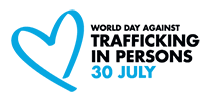PRESS RELEASE
UNODC World Drug Report 2024: Harms of world drug problem continue
to mount amid expansions in drug use and markets
Vienna, 26 June 2024
The emergence of new synthetic opioids and a record supply and demand of other drugs has compounded the impacts of the world drug problem, leading to a rise in drug use disorders and environmental harms, according to the World Drug Report 2024 launched by the UN Office on Drugs and Crime (UNODC) today.
“Drug production, trafficking, and use continue to exacerbate instability and inequality, while causing untold harm to people’s health, safety and well-being,” said Ghada Waly, Executive Director of UNODC. “We need to provide evidence-based treatment and support to all people affected by drug use, while targeting the illicit drug market and investing much more in prevention.”
The number of people who use drugs has risen to 292 million in 2022, a 20 per cent increase over 10 years. Cannabis remains the most widely used drug worldwide (228 million users), followed by opioids (60 million users), amphetamines (30 million users), cocaine (23 million users), and ecstasy (20 million users).
Nitazenes – a group of synthetic opioids which can be even more potent than fentanyl – have recently emerged in several high-income countries, resulting in an increase in overdose deaths.
Though an estimated 64 million people worldwide suffer from drug use disorders, only one in 11 is in treatment. Women receive less access to treatment than men, with only one in 18 women with drug use disorders in treatment versus one in seven men.
In 2022, an estimated 7 million people were in formal contact with the police (arrests, cautions, warnings) for drug offences, with about two-thirds of this total due to drug use or possession for use. In addition, 2.7 million people were prosecuted for drug offences and over 1.6 million were convicted globally in 2022, though there are significant differences across regions regarding the criminal justice response to drug offences.
The Report includes special chapters on the impact of the opium ban in Afghanistan; synthetic drugs and gender; the impacts of cannabis legalization and the psychedelic “renaissance”; the right to health in relation to drug use; and how drug trafficking in the Golden Triangle is linked with other illicit activities and their impacts.
Drug trafficking is empowering organized crime groups
Drug traffickers in the Golden Triangle are diversifying into other illegal economies, notably wildlife trafficking, financial fraud, and illegal resource extraction. Displaced, poor, and migrant communities are suffering the consequences of this instability, sometimes forced to turn to opium farming or illegal resource extraction to survive, falling into debt entrapment with crime groups, or using drugs themselves.
These illicit activities are also contributing to environmental degradation through deforestation, the dumping of toxic waste, and chemical contamination.
Consequences of cocaine surge
A new record high of 2,757 tons of cocaine was produced in 2022, a 20 per cent increase over 2021. Global cultivation of coca bush, meanwhile, rose 12 per cent between 2021 and 2022 to 355,000 hectares. The prolonged surge in cocaine supply and demand has coincided with a rise in violence in states along the supply chain, notably in Ecuador and Caribbean countries, and an increase in health harms in countries of destination, including in Western and Central Europe.
Impact of cannabis legalization
As of January 2024, Canada, Uruguay, and 27 jurisdictions in the United States had legalized the production and sale of cannabis for non-medical use, while a variety of legislative approaches have emerged elsewhere in the world.
In these jurisdictions in the Americas, the process appears to have accelerated harmful use of the drug and led to a diversification in cannabis products, many with high-THC content. Hospitalizations related to cannabis use disorders and the proportion of people with psychiatric disorders and attempted suicide associated with regular cannabis use have increased in Canada and the United States, especially among young adults.
Psychedelic “renaissance” encourages broad access to psychedelics
Though interest in the therapeutic use of psychedelic substances has continued to grow in the treatment of some mental health disorders, clinical research has not yet resulted in any scientific standard guidelines for medical use.
However, within the broader “psychedelic renaissance”, popular movements are contributing to burgeoning commercial interest and to the creation of an enabling environment that encourages broad access to the unsupervised, “quasi-therapeutic” and non-medical use of psychedelics. Such movements have the potential to outpace the scientific therapeutic evidence and the development of guidelines for medical use of psychedelics, potentially compromising public health goals and increasing the health risks associated with the unsupervised use of psychedelics.
Implications of opium ban in Afghanistan
Following the drastic decrease of Afghanistan’s opium production in 2023 (by 95 per cent from 2022) and an increase in production in Myanmar (by 36 per cent), global opium production fell by 74 per cent in 2023. The dramatic contraction of the Afghan opiate market made Afghan farmers poorer and a few traffickers richer. Long-term implications, including on heroin purity, a switch to other opioids by heroin users, and/or a rise in demand for opiate treatment services may soon be felt in countries of transit and destination of Afghan opiates.
Right to health for people who use drugs
The report outlines how the right to health is an internationally recognized human right that belongs to all human beings, regardless of a person’s drug use status or whether a person is imprisoned, detained or incarcerated. It applies equally to people who use drugs, their children and families, and other people in their communities.
* *** *
For further information, please visit:
World Drug Report 2024 homepage
***


